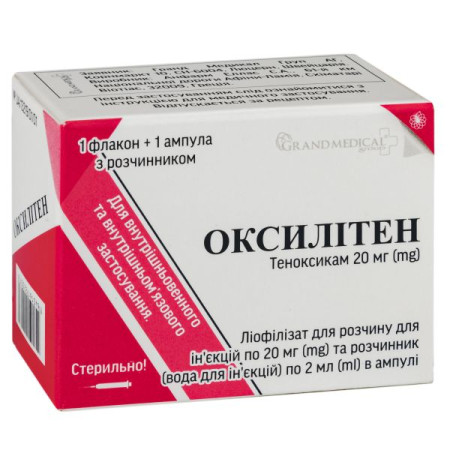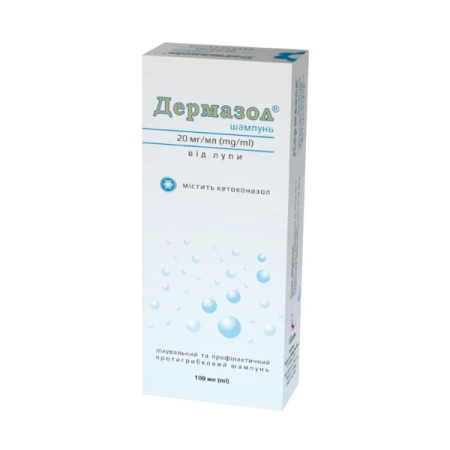Bupivacaine solution for injection 0.5% ampoule 10 ml No. 10

Bupivacaine is used for local anesthesia by percutaneous infiltration, peripheral nerve block(s) and central nerve block (caudal or epidural), i.e. it is used by a specialist in situations where prolonged anesthesia is required. Since sensory nerve block is more pronounced than motor block, Bupivacaine is particularly effective for pain relief, for example during childbirth.
Composition
Active ingredients: bupivacaine hydrochloride.
1 ml of solution contains 5 mg of bupivacaine hydrochloride.
Excipients: sodium chloride, diluted hydrochloric acid or sodium hydroxide, water for injections.
Contraindication
Hypersensitivity to amide-type local anesthetics or to any of the other ingredients of the drug. Bupivacaine is not used for intravenous regional anesthesia (Bier's block). Bupivacaine is not used for epidural anesthesia in patients with severe arterial hypotension, for example in the case of cardiogenic or hypovolemic shock. Epidural anesthesia, regardless of the local anesthetic used, has its own contraindications, which include:
diseases of the nervous system in the active stage: meningitis, poliomyelitis, intracranial hemorrhage, subacute combined degeneration of the spinal cord due to pernicious anemia and tumors of the brain and spinal cord; tuberculosis of the spine; purulent skin infection at or near the site of the lumbar puncture; blood clotting disorders or current treatment with anticoagulants.Method of application
Bupivacaine should be administered by or under the supervision of a physician experienced in regional anesthesia. Small doses should be used to achieve adequate anesthesia.
It is important to take special care to prevent accidental intravascular injection. It is recommended to perform an aspiration test before and during the administration of the total dose. For epidural administration of high doses, a test dose of 3-5 ml of bupivacaine with adrenaline should be administered, since accidental intravascular injection may cause, for example, a short-term increase in heart rate, and accidental intrathecal injection may cause spinal block. Verbal contact with the patient should be maintained for 5 minutes after the test dose and the heart rate should be checked periodically. In addition, aspiration should be performed before the total dose, which should be administered slowly, at a rate of 25-50 mg/min, in stages, while maintaining constant verbal contact with the patient. If symptoms of intoxication occur, the administration of the drug should be stopped immediately.
Features
Pregnant women
There is no evidence of adverse effects on human pregnancy, but bupivacaine should not be used in early pregnancy unless the benefit is considered to outweigh the risk.
Children
Bupivacaine is not used in children.
Drivers
Bupivacaine has minimal influence on the ability to drive and use machines.
Overdose
Accidental intravascular injections of local anesthetics can cause immediate (seconds to minutes) systemic toxic reactions. In case of overdose, systemic toxicity occurs later (15–60 minutes after injection) due to the slower increase in blood concentrations of the local anesthetic.
Side effects
Accidental injection into the subarachnoid space may result in a very high degree of spinal anesthesia, possibly with apnea and severe hypotension.
The adverse reaction profile of bupivacaine is similar to that of other long-acting local anesthetics. Adverse reactions caused by the drug itself are difficult to distinguish from the physiological effects of nerve block (e.g., decreased blood pressure, bradycardia) and from those caused directly (e.g., nerve injury) or indirectly (e.g., epidural abscess) by the needle puncture.
Neurological damage is a rare but well-known consequence of regional, especially epidural and spinal, anesthesia. It can be due to several causes, such as direct injury to the spinal cord or spinal nerves, anterior spinal artery syndrome, injection of an irritant, or injection of a nonsterile solution. This can result in localized paresthesia or anesthesia, motor weakness, loss of sphincter control, and paraplegia. Sometimes these effects are long-lasting.
Interaction
Because systemic toxic effects are additive, bupivacaine should be used with caution in patients receiving other local anesthetics or drugs structurally similar to amide-type local anesthetics, such as certain antiarrhythmic drugs such as lidocaine and mexiletine. Specific interaction studies between bupivacaine and class III antiarrhythmic drugs (e.g. amiodarone) have not been performed, but caution is advised in such cases.
Storage conditions
Store in original packaging at a temperature not exceeding 25ºС. Do not freeze. Keep out of the reach of children.
Shelf life: 2.5 years.
There are no reviews for this product.
There are no reviews for this product, be the first to leave your review.
No questions about this product, be the first and ask your question.













